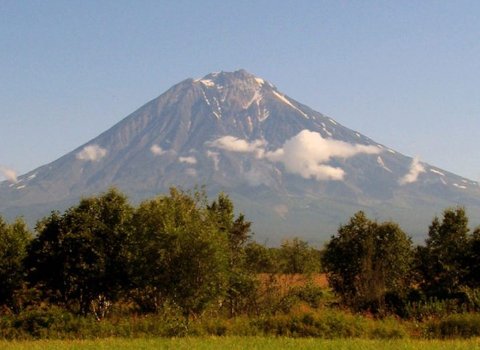New research led by scientists at the University of Southampton has used machine learning with plate tectonic reconstructions to examine the complex role of volcanoes when it comes to atmospheric CO2.
The researchers, working with colleagues at the University of Sydney, Australian National University (ANU), University of Ottawa and University of Leeds, wanted to understand the combined processes that have previously stabilised the Earth’s temperatures. Their findings were published in the journal Nature Geoscience.
Drivers of chemical weathering was a focus point of the research. Chemical weathering refers to the breakdown and dissolution of rocks on the surface of the Earth. When these rocks are broken down and end up in the oceans via rivers, they form new minerals that trap CO2. This mechanism affects atmospheric levels of CO2 and the global climate.
“Many Earth processes are interlinked, and there are some major time lags between processes and their effects,” explained Eelco Rohling, professor in ocean and climate change at ANU and co-author of the study. “Understanding the relative influence of specific processes within the Earth system response has therefore been an intractable problem.”
Reconstructing the past
In order to investigate the Earth’s history, the team used machine learning algorithms and plate tectonic reconstructions to model interactions within the Earth and how they might have changed over time.
This is how they came to identify continental volcanic arcs as the most important driving force of weathering intensity in the last 400m years. These volcanoes are some of the highest and fastest eroding geographical features on Earth. When bits of these volcanoes break off, they are more rapidly weathered.
Once these rock fragments reach the oceans, they trap carbon dioxide in the atmosphere. This means that volcanoes play a balancing act, researchers found, between emitting large amounts of CO2 while also removing carbon dioxide through erosion processes.
To date, a predominant theory relating to the Earth’s climate was that CO2 levels were primarily balanced by processes of weathering of the seafloor and continental interiors but this research suggests that may not be the case.
“The idea of such a geological tug of war between the landmasses and the seafloor as a dominant driver of Earth surface weathering is not supported by the data,” said Tom Gernon, associate professor in earth science at the University of Southampton.
Using the findings for the future
“Unfortunately, the results do not mean that nature will save us from climate change,” Gernon added. “Today, atmospheric CO2 levels are higher than at any time in the past 3m years, and human-driven emissions are about 150 times larger than volcanic CO2 emissions.
“The continental arcs that appear to have saved the planet in the deep past are simply not present at the scale needed to help counteract present-day CO2 emissions.”
These findings could lead to new management tactics for the climate crisis, however. By pulverising rocks and spreading the debris across the land, it would be possible to artificially speed up the chemical reaction rates that take CO2 from the atmosphere. By using volcanic materials containing calcium, potassium and sodium, it could be possible to emulate the processes at play in continental arc volcanos.
“This is by no means a silver bullet solution to the climate crisis – we urgently need to reduce CO2 emissions in line with IPCC mitigation pathways, full stop,” Gernon said.
“Our assessment of weathering feedbacks over long timescales may help in designing and evaluating large-scale enhanced weathering schemes, which is just one of the steps needed to counteract global climate change.”
Sam Cox
This article originally appeared on www.siliconrepublic.com and can be found at: https://www.siliconrepublic.com/innovation/volcanoes-atmospheric-co2-computer-modelling
Ireland
